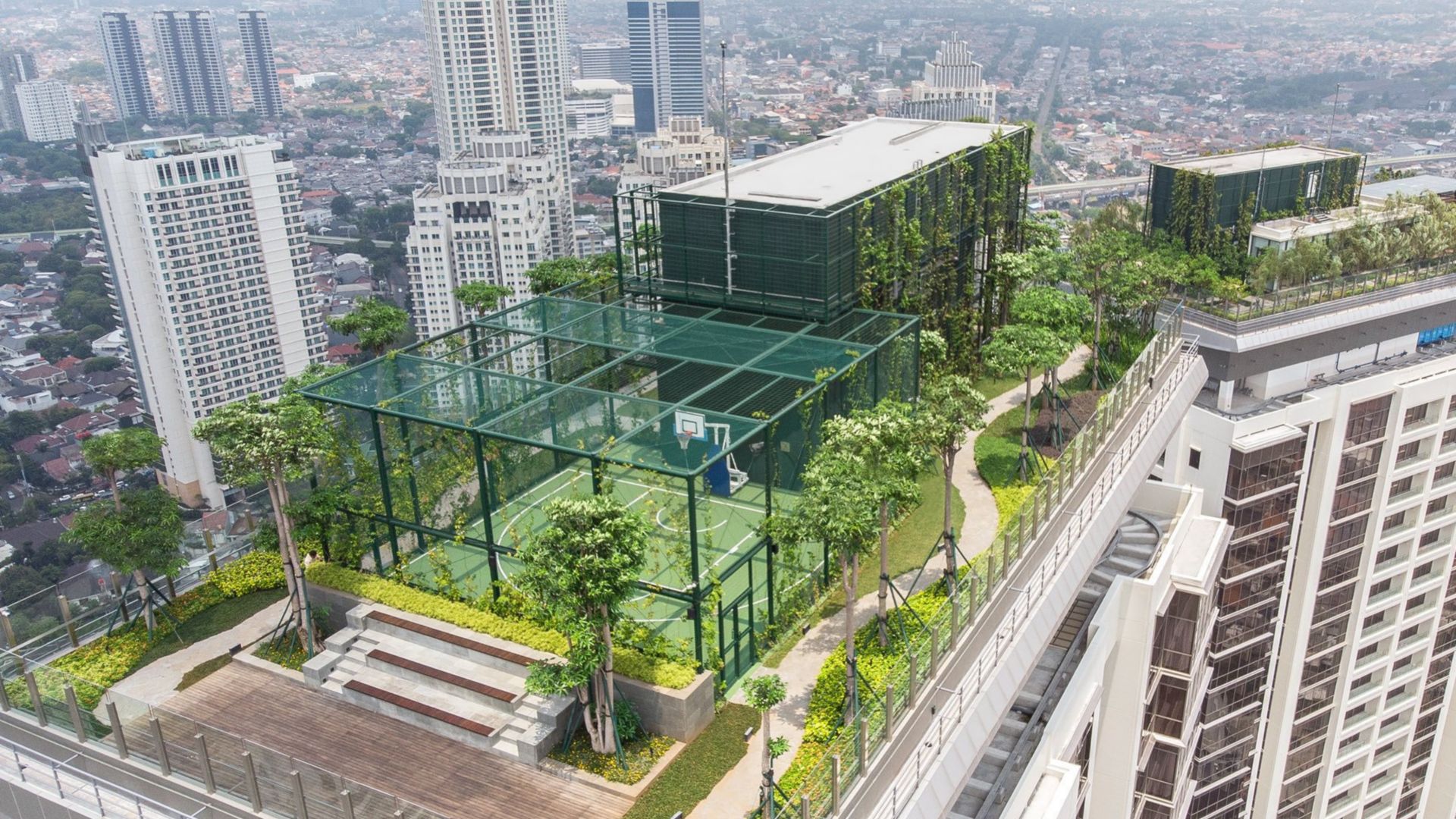05/07/2021
Future Proofing Roofing
Dr. Sarah Peake, Sustainability Manager at Sika UK, explores how green roofs can be used to help mitigate climate change and its effects.
The fight to limit the impact of climate change is on with governments and companies alike pledging to do their part in helping to restrict global warming to 1.5°C. The construction industry has a large role to play in this with buildings that have longer lifespans considered to be more sustainable than their shorter-lived counterparts. Therefore, methods for extending a building’s expected lifespan should be carefully considered when looking towards a greener future.
Green roofs are the perfect example of a current technology that enables us to future-proof our built environment. Of course this type of roof system is already highly desirable in cities that have development action plans with an Urban Greening Factor, like London, Manchester and Birmingham. With careful consideration, green roofs can already help towards hitting government targets, such as the recently introduced Biodiversity Action Plan. Green roofs can also contribute towards an improved rating from well-respected green building programmes such as BREEAM and WELL.
There are further government-led green initiatives bubbling under the surface with the new Environmental Bill expected shortly and the UN Climate Conference, COP26, later this year. Couple this with the new version of BREEAM that’s expected in the next couple of years and I would be surprised if green roofs didn’t factor even more heavily in future sustainable construction policies.
So how do green roofs help us improve the long-term durability and sustainability of buildings? We can predict that extreme weather conditions will become more frequent as climate change takes effect. These one-in-a-hundred year weather events, such as intense rainfall, may become commonplace in a building’s lifetime. Green roofs allow for the safe and managed collection and distribution of rainfall, reducing flood risk and other issues associated with the quantity and velocity of water run-off during one of these events.
Similarly, massive fluctuations in temperature can affect some building products negatively, reducing their lifespan and increasing the requirement for maintenance and replacement. They can also have an adverse impact on building occupants and the building’s energy use. A green roof can help improve the thermal performance of a building by reducing internal temperature fluctuations and making it a more pleasant environment for occupants, as well as reducing operational emissions
In addition, a green roof also acts as a natural layer of protection to the chosen waterproofing system below it. In fact, it has been suggested that in some situations a building with a green roof installed may never need a new roof. This is especially good news when you factor in the government’s drive towards zero avoidable waste in the construction industry. It’s always important to consider all impact areas, including waste and emissions throughout a product’s entire life cycle when thinking about sustainable options.
Taking a holistic view, let’s not forget another vital aspect of sustainability: the wellbeing of our communities. The impact of the coronavirus pandemic has, for many, awoken a new appreciation of green spaces and their positive impact on our mental and physical health. Green roofs could have an important role to play here too. Businesses that offer access to, or even a view of nature, see significant benefits in terms of the happiness and productivity of their employees. Post-pandemic, a company with a facility that has outdoor meeting spaces on a green roof may see more employees returning to the office and attract the best talent thanks in part to its wellbeing and sustainability credentials. The same goes for residential developments in urban areas – the benefits of fresh air and green space to residents who may otherwise have to travel to a public park cannot be underestimated.
Looking to the future it’s likely that green roofing will become the norm; an expectation of planners, building users and local authorities alike. But if we’re really future gazing, there is the potential that green roofs will not only help us manage and mitigate the impacts of climate change, build more sustainably and improve the lives of building occupants, but also monitor and report on the environment around us.
With BIM we can see a 3D model of a building that gives us the opportunity to collaborate on a range of data to aid the construction process. But soon technology will allow us to create ‘digital twins’ of cities, which contain reams of valuable information, such as building occupancy, changes in solar shading, energy consumption, building products used, contractors involved in installation, and maintenance requirements. The possibilities are endless. In terms of green roofs, sensors could be used to take a myriad of readings such as air quality, solar exposure and rainfall, to show the benefits of the roof and also feed into the bigger picture of statistics on sustainable development and changes in weather conditions.
In support of specifiers looking to build for a sustainable future, we are excited to have recently launched our new Sika Green Roof systems. This is a total package that gives specifiers the choice of one of our high performance waterproofing systems that best fits the needs of their project – whether that’s hot melt and reinforced bitumen membranes, single ply or a cold-applied liquid – coupled with our green roof system on top.

